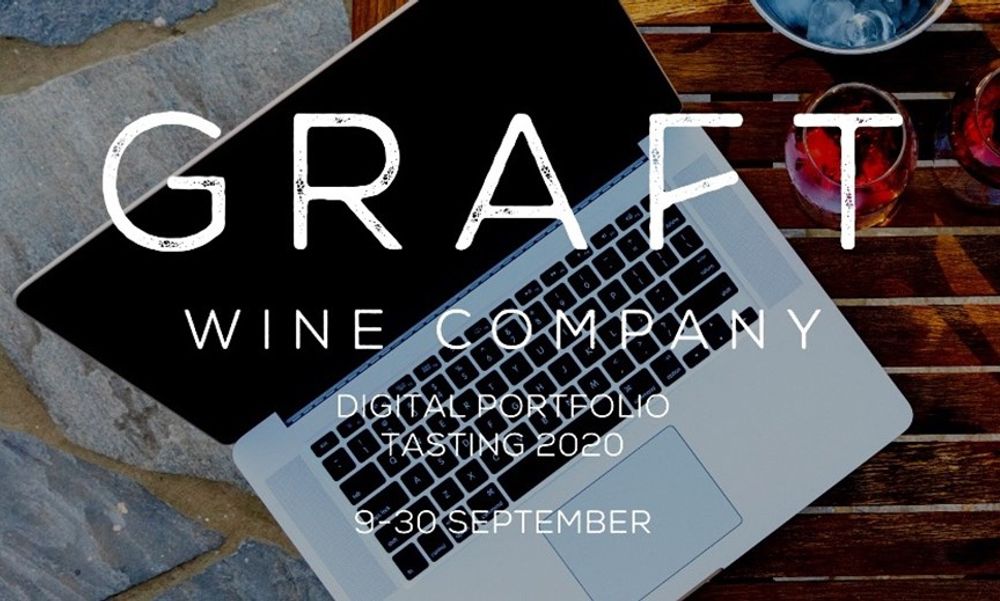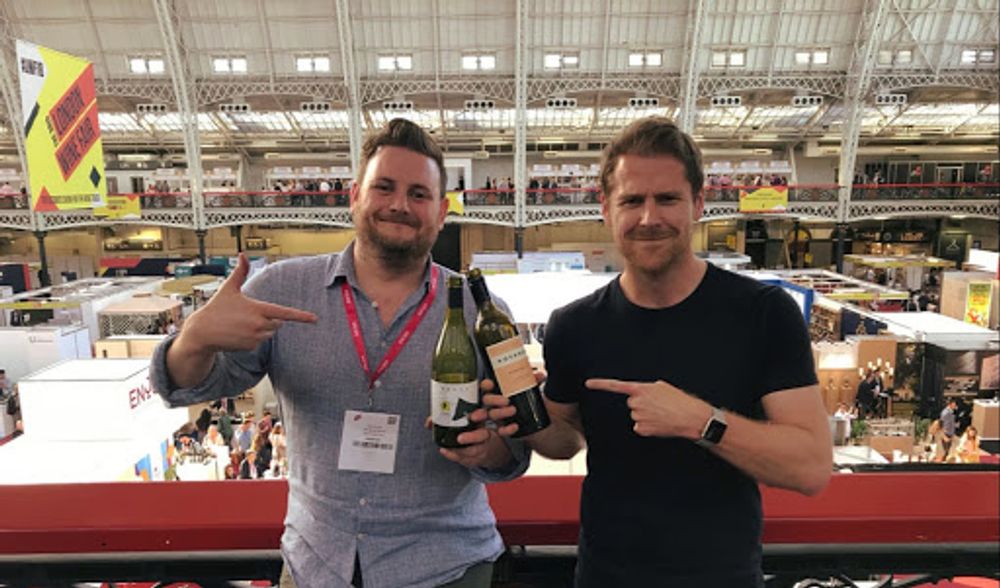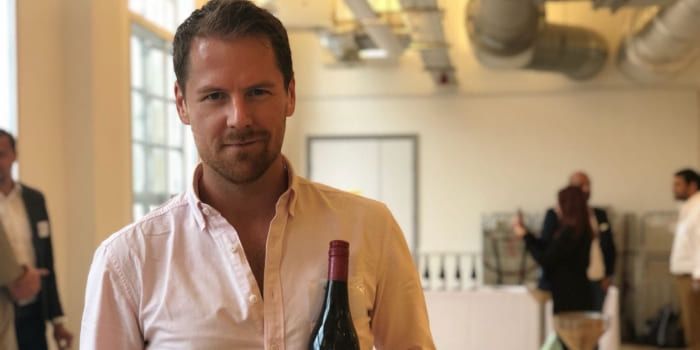Frustrated you can’t get out and about to all the trade tastings you used to go to? The Graft Wine Company’s Nik Darlington suggests a new way forward for us all that puts digital and data at the heart of future events.
Covid-19 has prompted an existential crisis for the traditional trade tasting. Under prevailing conditions, it is impracticable; even into next year, it will remain courageous.
Small, focused tastings and judging sessions have resumed and it appears successfully so – at the very least because people have missed seeing and interacting with trade colleagues. It should be said though that many remain uncomfortable about even these small gatherings, especially if travelling is involved.

Nik Darlington says we should not give up on hosting portfolio tastings during Covid-19 but rethink them – dramatically
We are all getting to grips with living with Covid-19. To some extent life must go on. If we remain locked away, our skills, knowledge and networks shall atrophy. Tasting with others is an essential part of this trade. It shouldn’t be too great a challenge to resume this more and more as restrictions ease in time.
But tastings on a larger scale are a different matter and it is sad to say that importer portfolio events or generic trade body offerings with hundreds of attendees are currently for the birds.
And yet as someone who has hosted a busy portfolio tasting every year since 2015, and over the last two years across four different UK cities, I’m acutely aware how valuable they are as shop windows and for building a brand.
Coming out of summer without these autumnal sales foundations was disconcerting, especially in an environment that is inconducive to the travel and social contact we’re accustomed to.
This focused the mind in two ways. First, how to replace physical events with something online that both engages existing and prospective customers and puts wines in front of them to buy? And second, is the portfolio tasting the best medium for selling more wine?
The digital portfolio ‘tasting’

The new way to do an online portfolio tasting with Graft Wine
In short, we aimed to answer the first question by creating a way for customers to browse our full portfolio in unusually minute detail, complete with explanatory videos.
We engaged the team at Bottlebooks, who already host the wine data that helps feed our smartphone app for instance, to create a standalone digital portfolio using its ‘Bottlebooks Sites’ feature with detailed information about each wine including tasting notes, analytics, images and our 90-second tasting videos. They also connected an e-commerce style checkout for customers to request wine samples, saving us and them time.
We would then receive sample orders that could be reviewed, despatched and start or renew conversations with clients we might otherwise have had at our actual tastings. The process ran for three weeks during September in order to give customers as much opportunity as possible to browse, get to grips with the format and take part.
It’s a method that I’m pleased to see has already been adopted by other importers and based on our experience it should be here to stay, perhaps even once big tastings resume and for these three main reasons.

Forget the train fare…simply log on and you could take part in the Graft Wine Company digital tasting
1 Gathering data and insights
It can gather data and insights that a physical tasting can’t. As well as the basic registration and attendance figures, we could track which videos are being watched, which wines are being clicked on and searched for, and ultimately which wines people are most interested in trying (perhaps unsurprisingly given the number of awards Jacob, Zoe and the team have been deservedly winning of late, this accolade went to Black Chalk). This is far more scientific than scanning the empties at the end of a busy portfolio tasting.
2 The follow-up conversation…
It is far more effective way to have follow up conversations with existing and potential new customers. We can narrow our attention on the wines that someone actually wants to know about and tailor the follow-up accordingly. If that conversation leads in different directions then that’s great too, but from the outset no one is wasting anyone’s time with wines that might turn out to be unsuitable.
Account managers can better track new listings and thus improve the ‘after care’, because we have a record of what was tasted; meanwhile customers don’t have to rely on just one of a dozen well-thumbed, crumpled portfolio tasting brochures (if it’s not mislaid) for reference.
3 We’re taking the tasting to the customer
We’re taking the tasting to the customer. A common criticism from customers around the country is that portfolio tastings, particularly for the smaller, specialist suppliers, are overly London-centric. I always agreed it’s a valid criticism, which is why we took the Red Squirrel tasting on the road to Bristol and Manchester in 2018, then Graft to Edinburgh and Manchester in 2019. Even so, travelling to any of these major cities can still be a big cost in time and money for many customers.
The digital tasting could continue to connect with people in the future who might otherwise feel excluded from the big tastings. This opportunity to taste a focused selection of wines in their own time was what customers seemed to value most.
How has it turned out?

David Knott and Nik Darlington came together as form Graft Wine Company in 2019
It’s still very early days but the results of our first digital portfolio tasting are encouraging. Nearly four in 10 of those who registered requested samples. It’s worth noting that the approach to ordering samples was both respectful and business-like. Buyers were interested in trying entry-level wines as much as they were cherry-picking the more expensive options – and I must add if they did, we were delighted, because these are wines that often customers are hesitant to ask for and we might be hesitant to show.
Turning the conversation into a simple e-commerce transaction perhaps removed that obstacle.
Two-thirds of registrations were from independent merchants, whereas at last year’s physical London tasting nearly two-thirds were from the on-trade. However, on-trade ‘attendees’ were slightly more likely to request samples, perhaps a reflection of this being a pivotal time of year for changing wine lists.
Feedback from both customers and producers has, I’m pleased to say, been excellent. And if the proof of the pudding is in the eating, then one-fifth of those samples requests have already resulted in new listings just days out from the end of the event period.
How to do it better
It didn’t always go according to plan. There were teething problems with some of the IT software, fully to be expected as no one has done this before. On that front though I can’t recommend the input from Bottlebooks more highly. Jonathan and his team recognised the potential, immediately grasped what was required and brought good ideas to the table as well as moving at pace. What was created looked and felt very professional.
We naturally had to limit what wines we could send to people. Some simply ran out. Some were delayed or not due to arrive till later in the event period. Some are available in such small quantities we had to restrict them. This caused some disappointment. I maintain that it was still useful to know what people wanted to try, even if we couldn’t fulfil that request at that specific point in time. It also prompted mutually beneficial conversations about other wines.
Nonetheless, if we were doing it again, we might plan longer in advance to ensure a finite but guaranteed stock level specifically for the tasting.
There is also a cost to us in sending full bottles of wine. As it turned out, this cost was manageable but if done on a bigger scale it becomes prohibitive. We do not currently have the facilities in place to spend days at a time decanting tasting samples but again with more foresight, this is a no-brainer. Thanks to Covid-19 and the boom in virtual tastings, there are now many novel technologies available to do this.
I would also want to incorporate more set-pieces throughout the period, perhaps involving curated samples around a theme or winemaker tasted communally online. We did some virtual tasting with customers who ordered samples, and some interviews with winemakers over Instagram, but I would definitely like to enhance interactivity.
(Here’s an example of how Nik Darlington was able to use video tasting reviews to help its customers about the wines they could taste)
Is the future for the portfolio tasting a digital one?
No. The portfolio tasting is the most effective and enjoyable way for a supplier to showcase their wares while simultaneously projecting who they are and what they represent as a business.
Ever since my first – utterly terrifying till 10 minutes before the finish – portfolio tasting in an over-capacity Soho member’s club in 2015, they have been the highlight of my professional calendar. As well as customers, they bring together winemakers from across the globe and have forged lasting friendships between us and them.
So as soon as they can resume safely, they shall. Purely from the brand building perspective, the portfolio tasting reigns supreme.
Yet to return to my second question – is it the best way to sell wine? – I am undecided. We have established over several years that our portfolio tastings are, alongside other key events like the London Wine Fair, among our biggest sources of new business. This was especially true in the earliest days. They are worth the time and investment.

David Knott and Nik Darlington say the London Wine Fair would still be a must for them even if digital tastings continue in the future
My experience of our first digital portfolio tasting, however, seems to be telling me that the traditional portfolio tasting can lack rigour in terms of gathering usable sales data, is possibly leaving money on the table as a result and is probably excluding too many customers.
I mentioned that already one-fifth of customers who sampled as a result of the tasting have added new listings (of the specific wines they sampled) – that may or may not be a better or worse result so soon after a physical portfolio tasting, but crucially I can calculate that number accurately in the first place.
Which makes me believe that the tastings of the future may have to involve a blend of both. This could involve physical tastings running alongside digital tastings, or more likely a symbiotic relationship between the two.
Above all, data gathering is paramount. Not only is it valuable to us in understanding our wines and our customers better, it is in turn valuable to those customers. We can track what they’re interested in, so can they, and service becomes more personalised and relevant.
We all miss the beating heart and soul of a proper tasting. But if there’s a silver lining to all that’s going on, we might have stumbled on ways to make them even better.
































